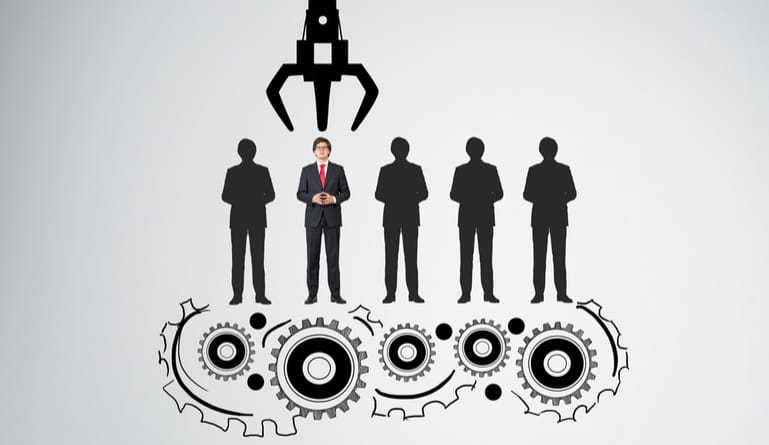Artificial intelligence (AI) is proving to be a powerful business tool and is having an impact on businesses everywhere. Technology Review reveals, “Organizations that have enabled AI at the enterprise level are increasing operational efficiency, making faster more informed decisions and innovating new products and services.” When it comes to innovation and growth, AI is primed to play a huge part in how organizations do business in the future, from measuring metrics to assisting with customer service.
Implementing artificial intelligence AI in HR human resources analytics can be a major benefit to your business.
Four benefits of using artificial intelligence in human resources
How does AI in HR analytics improve human resources? Here’s where some analytics companies are seeing the impact of AI on HR.
1. Recruiting:
This might be one of the biggest HR areas to date that has benefited from AI. Companies that are using AI in their recruiting are seeing more quality candidates and shorter hiring teams. Companies such as Ideal are helping other businesses find their “ideal” candidates in 3 easy steps:
- Resume screening, where Ideal’s smart software scans resume to find matches for job postings (and has been reviewed as accurate and effective, even with a high volume of candidates)
- Candidate sourcing, meaning the software can search job boards and other sources to find external, and
- Candidate rediscovery, which uses AI to search your internal employee records to see if there is a potential match that would be a good fit already in your company.
Ideal, and other AI-based recruiting software, is a great way to help companies use AI analytics to separate good from great in their candidate list.
2. Onboarding:
Chatbots aren’t new, but some companies have taken them from a customer-facing piece of their business to an internal one, and have HR assistant chatbots set up, ready to answer questions about PTO, benefits, holidays, company policies and more. Through analysis of the data that employees are requesting, HR can help identify potential knowledge gaps and implement training where needed.
3. Promotions and performance evaluation:
Performance is all about metrics and goals. AI can sort through projects, tasks, and other data to help managers analyze where someone is meeting or missing the mark. It can help employees better understand the data behind their evaluation and remove any potential bias in promotions.
4. Better job postings:
The better a company listing sounds – and the clearer it is – the more applicants will be drawn to it. AI software like Textio use AI analytics to read and review your job ad and then make suggestions for more effective ad. Textio compares your post copy to the copy of similar job listings around the web and can make suggestions on what might make your job posting more successful based on data like how quickly a similar position could fill that role using similar or different language.
Many companies have already started using AI processes and Technology Review is quick to point out that some companies that aren’t using AI in their processes are starting to fall behind in certain areas. The longer these companies wait, the harder it might be to implement AI down the road. Computer Weekly predicts that organizations will be automating many HR departments with AI technology by 2020.
While AI analytics capabilities continue to advance the company’s abilities to hire and manage personnel, as well as predict business patterns and accurately analyze data from multiple sources, there are still some challenges that will need to be addressed as businesses onboard more AI technology. The largest challenge is how businesses will use AI as part of their overall strategy and how they’ll be able to use AI in a meaningful way enterprise-wide. For the time being though, it seems that AI in HR and in all of the business has benefits that outweigh the challenges.




